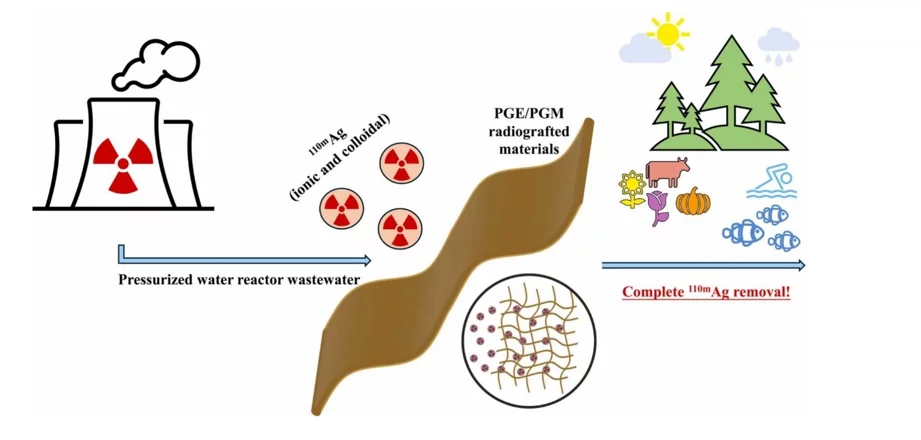Nuclear power plays a crucial role in a sustainable future due to its ability to generate large amounts of low-carbon electricity, which is essential for mitigating climate change. Unlike fossil fuels, nuclear energy produces minimal greenhouse gas emissions, helping to reduce the overall carbon footprint of power generation. However, the main concern is the inevitable accumulation of nuclear waste, and this needs to be properly addressed. With the anticipated increase in the number of operating nuclear power plants around the world it is essential to develop new materials and technologies for nuclear waste management. In our latest study we have developed and tested new radiografted materials as potential 110mAg adsorbents. This silver radionuclide is a very elusive contaminant in the pressurized water reactors (PWR) and represents a major problem for normal operation. Additionally, 110mAg possess a significant danger to the environment, if not removed completely from the PWR wastewater.
This study investigates the performance of newly developed radiografted materials as adsorbents for ionic and colloidal 110mAg, a significant pollutant found in pressurized water reactor (PWR) wastewater. A comparative analysis was performed to assess their effectiveness against commercially available resins. Most of the worlds operating nuclear power plants are PWR (≈ 70%) and their number is projected to increase in the future. Therefore, it is essential to minimize and optimize PWR wastewater processing. The study examined simulated inactive and radioactive waste samples containing trace amounts of 110mAg, which are challenging or impossible to detect with standard analytical techniques. The synthesized materials were labeled as PGE (with amine functional groups) and PGM (with sulfhydryl and amine functional groups). Such specific functionalization was chosen since it is known that these groups strongly interact with colloidal and ionic silver. The tested materials exhibited exceptional adsorbent performance by completely removing (100%) both ionic (PGM) and colloidal (PGE) forms of 110mAg, in contrast to other commercial methods. Moreover, depending on the adsorbed species, excellent elution of 110mAg was achieved (over 94% for ions and over 50% for colloids). This implies possible reusability of the adsorbent material. The manufacturing cost of these adsorbents is significantly lower when compared to specialized or general use commercial resins. These findings suggest that these cost-effective materials could be used efficiently and selectively to treat PWR wastewater for 110mAg contamination, thereby reducing operating costs and minimizing the production of solid waste.
Contact
Dr. Đorđe Cvjetinović
Paul Scherrer Institute PSI
+41 56 310 57 41
djorde.cvjetinovic@psi.ch
Original publication (DOI)
-
Pan X-H, Petrović J, Zu J-H, Cvjetinović Đ
Removal of ionic and colloidal 110 mAg from radioactive wastewater using radiografted chelating adsorbents
Journal of Environmental Chemical Engineering. 2024; 12(5): 113395 (11 pp.). https://doi.org/10.1016/j.jece.2024.113395
DORA PSI

